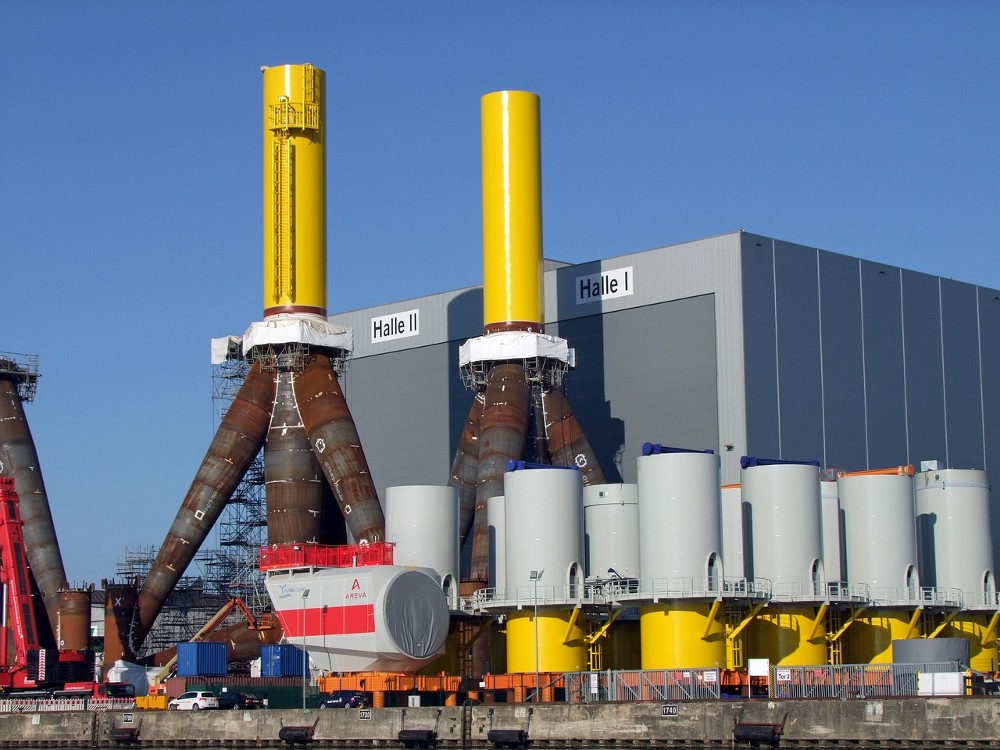5 Resources Offshore Wind Needs To Materialise Ambitions

Offshore wind has the power to shift the world’s reliance on oil and gas, bearing the potential to power millions of homes. In some countries like the UK, offshore wind already accounts for a substantial–and increasing–percentage of the total energy mix.
However, the size of industry remains far from where the world needs it to be to hit targets by 2030. Of the 19 nations with defined goals for offshore wind, only Poland and Ireland are on track to meet them. Forecasts predict only 160GW of farms will be operational by 2030, as opposed to the pledged 255GW.
Plans and investor interest are present, as evidenced by record-breaking auctions and tenders these past couple of years. The critical challenge is in building and securing the resources needed for the success of offshore wind. Here are some key resources that need to be fast-tracked in the coming years.
Installation Vessels
The Les Alizes is a newly minted wind turbine installation vessel (WTIV). Completed in 2023, the ship has already been chartered to work for most of the decade on RWE’s Thor Project in Denmark.
Around the world, ships like the Les Alizes are being booked for the long-term, driven by offshore wind’s rapid growth. For context, targets for offshore wind are now fourfold what they were in 2020. This boom–while necessary to meet targets–has put a strain on the supply of these specialised installation vessels.
Delays due to regulatory challenges and uncertainty over inflation are also threatening ship availability in the burgeoning Asia-Pacific. Excluding China, most of the region relies on ships currently tied up in Europe. The region is estimated to contribute 930 GW of offshore wind capacity by 2030.
Port Facilities
Turbines are assembled onshore, typically in the nearest harbour due to the difficulty of transporting massive components over long distances. These ports are outfitted with specialised machinery that can lift components, as well as the acreage needed to store components lined up for assembly.
As more projects advance down the pipeline into construction, it’s becoming increasingly difficult to find the space to assemble turbines. A mid-sized wind farm houses an average of 50 turbines. The world’s biggest operational farm, Dogger Bank, has 277.
Today’s ports aren’t ready to handle the onslaught of orders coming through its doors. Port capacity single-handedly threatens to derail Germany’s ambitious capacity targets. In Scotland, experts estimate it will take 50 years to build already leased projects given the country’s port capacity.
Transmission Equipment & Grid Connections
The expansion of offshore wind energy requires specific equipment to transport electricity generated to the onshore grid. With hundreds of farms planned for the next decade and beyond, no grid in the world is ready to cope with demand.
Places to connect onshore are limited. Along the Atlantic Coast where many of the U.S. wind farms are planned to rise, many coastal points of interconnection (POIs) have already been claimed.
Farms of the future will also be switching to High Voltage Direct Current (HVDC) technology, which transmits power more efficiently over extended distances with lower energy losses compared to High Voltage Alternating Current (HVAC), making it suitable going forward with more farms built further from the shore. Currently, there’s a limited supply of switchgear and filters, cables, and converters to build out the new system.
Skilled Manpower
Skill shortage remains a significant barrier to offshore wind’s expansion. Around 68 percent of wind companies struggle to find skilled professionals. In the UK, 56,000 more jobs will need to be filled by 2026 as a bulk of projects move into the construction phase. The U.S. has a standing order for 44,000 jobs by 2030. Today, it has less than 1,000.
Apprenticeships and programmes will be vital for producing the next generation workforce. But training students into qualified professionals will take years, which is time the industry doesn’t have under strict timelines and targets. Compounding the challenge is the demand for skilled trade workers elsewhere, including other renewables undergoing their own build-out.
Migrating workers from oil and gas will be vital for solving short-term shortages. At places like the Edison Chouest Offshore shipyard in Louisiana, offshore wind is already serving as the next chapter for hundreds of oil and gas workers affected by layoffs of an industry on its final legs. “I care that there’s work,” says Whit Carter, an oil and gas veteran turned project manager for building the United States’ first offshore wind vessel.
Domestic Manufacturing
Production of nacelles, gearboxes, blades, and other essential components are estimated to remain sufficient until 2026. However, a looming shortage looms beyond, as markets outside of China begin to feel the squeeze between demand and an inadequate capacity to produce parts locally.
China currently is the world’s biggest producer of nacelles, accounting for 60 percent of all production. In comparison, only 15 percent come out of Europe. By 2030, it would have to double capacity to supply European farms alone.
Offshore wind represents a transformative force in global energy. However, the shortage of specialised resources, from installation vessels and port facilities to transmission equipment and skilled manpower, poses a threat to meeting ambitious targets.
As the world grapples with the imperative to transition swiftly to renewable energy, strategic investments, collaborative efforts, and innovative solutions are imperative to unlocking the full potential of offshore wind.